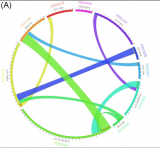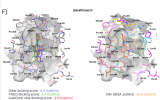Mostrant de 1 a 5 de 5 notícies disponibles amb etiqueta "COVID-19"
-

A new article published about the mutation coldspots in SARS-CoV-2 M-pro
Garcia-Segura P, Llop-Peiró A, Novau-Ferré N, Mestres-Truyol J, Saldivar-Espinoza B, Pujadas G, Garcia-Vallvé S. SARS-CoV-2 main protease (M-pro) mutational profiling: An insight into mutation coldspots. Comput Biol Med. 2024 Nov 11;184:109344. doi: 10.1016/j.compbiomed.2024.109344.
-

Could nucleocapsid be a next-generation COVID-19 vaccine candidate?
Saldivar-Espinoza B, Macip G, Pujadas G, Garcia-Vallve S. Could nucleocapsid be a next-generation COVID-19 vaccine candidate? Int J Infect Dis. 2022 Nov 5;125:231-232. doi: 10.1016/j.ijid.2022.11.002.
-

Haste makes waste: A critical review of docking-based virtual screening in drug repurposing for SARS-CoV-2 main protease (M-pro) inhibition
Macip G, Garcia-Segura P, Mestres-Truyol J, Saldivar-Espinoza B, Ojeda-Montes MJ, Gimeno A, Cereto-Massagué A, Garcia-Vallvé S, Pujadas G. Haste makes waste: A critical review of docking-based virtual screening in drug repurposing for SARS-CoV-2 main protease (M-pro) inhibition. Med Res Rev. 2021 Oct 26. doi: 10.1002/med.21862. PMID: 34697818.
-

Experimental studies confirm the inhibitory capacity of SARS-CoV-2 replication of an antibiotic for veterinary use
A study by the URV's Chemoinformatics and Nutrition Research Group now shows that a new drug, sarafloxacin, also has inhibitory capabilities of M-pro (a key enzyme in the replication and transcription of the virus responsible for COVID-19 ). The European experimental validation initiative, COVID Moonshot, has studied it to check its bioactivity and the results confirm that it is the third drug of the seven identified by this research group that inhibits M-pro. Experimental results with sarafloxacin have also shown that its ability to slow down virus replication is even higher than the two anti-inflammatory drugs that were initially validated.
-

Two anti-inflammatory drugs found that inhibit the Main protease (M-pro) from SARS-CoV-2
A study by the URV's Cheminformatics and Nutrition research group has shown that an anti-inflammatory drug for humans and another for animals inhibit a key enzyme in the replication and transcription of the COVID-19 virus. The results of the work have been validated by the initiative COVIDMoonshot which has carried out in vitro studies and assessed their bioactivity. The results have been published in the "International Journal of Molecular Sciences"
